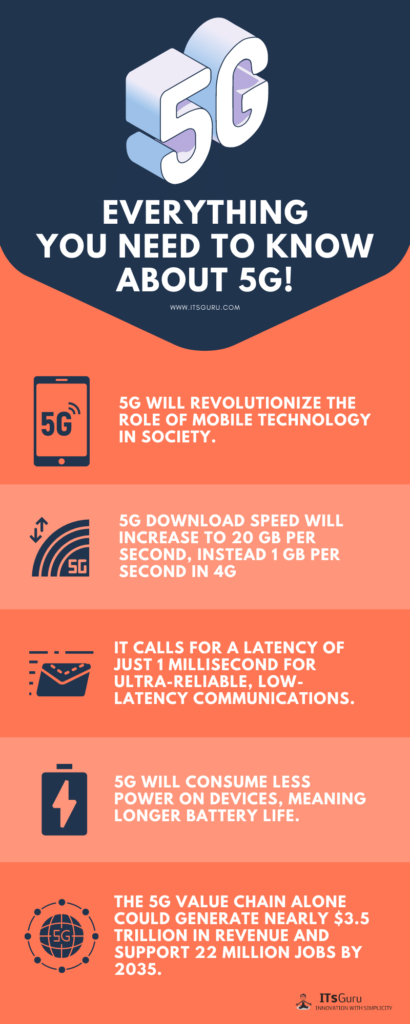5G is a 5th generation mobile network. This is a new global wireless standard followed by 1G, 2G, 3G, and 4G networks. 5G enables a new type of network designed to connect almost anything, including machines, objects, and devices. Higher productivity and better efficiency empower new users and connect new industries.
Speed and Latency: One of the most significant advantages of 5G is its exceptional speed. This ultra-fast speed translates to almost instantaneous downloads, seamless streaming of 4K and 8K content, and smoother online gaming experiences.
Massive Device Connectivity: 5G introduces the concept of the Internet of Things (IoT) to a new level. This connectivity potential will lead to innovations in fields ranging from healthcare and transportation to agriculture and manufacturing.
Challenges and Deployment: Despite its immense potential, 5G deployment hasn’t been without challenges. The technology relies on a network of small cells due to its shorter wavelength, requiring a more extensive infrastructure compared to previous generations. There have also been concerns about the potential health effects of increased exposure to radiofrequency radiation, although regulatory bodies generally deem 5G safe within established guidelines.
Global Impact: 5G isn’t just a technological upgrade; it’s a catalyst for innovation. Industries across the board are exploring its capabilities, from enhanced communication to improved supply chain management. Experts anticipate that the rise of 5G will pave the way for advancements in artificial intelligence, remote work, and immersive technologies such as virtual and augmented reality.
See the below infographic by ITsGuru to understand better.

